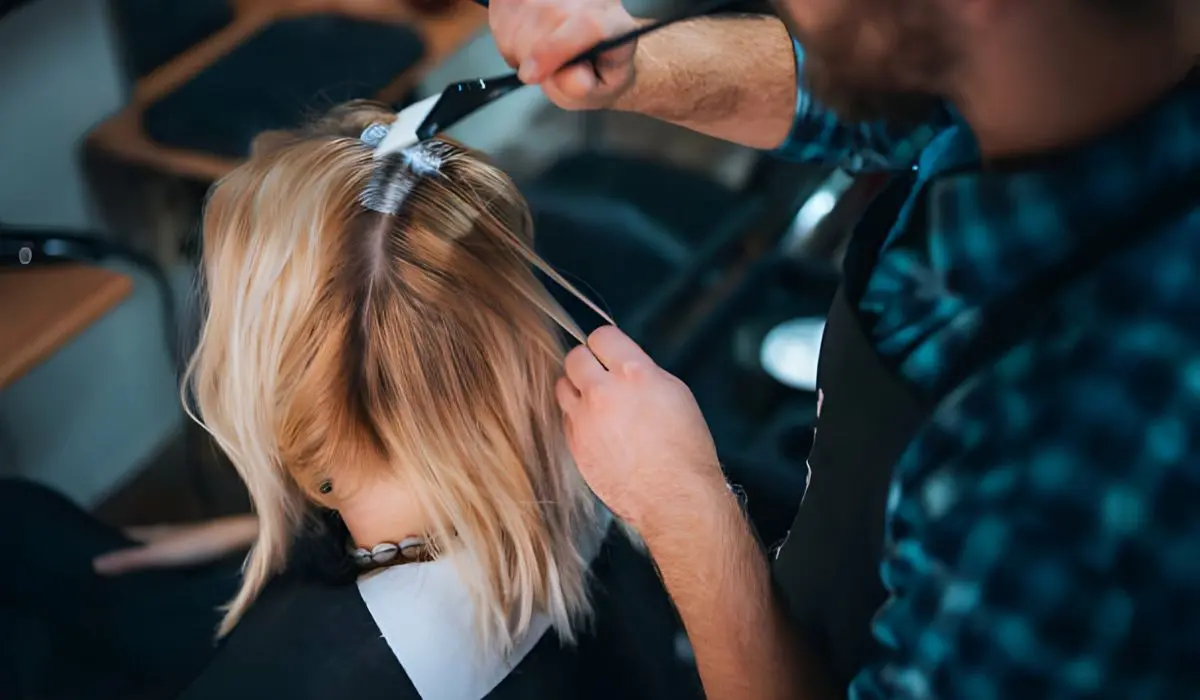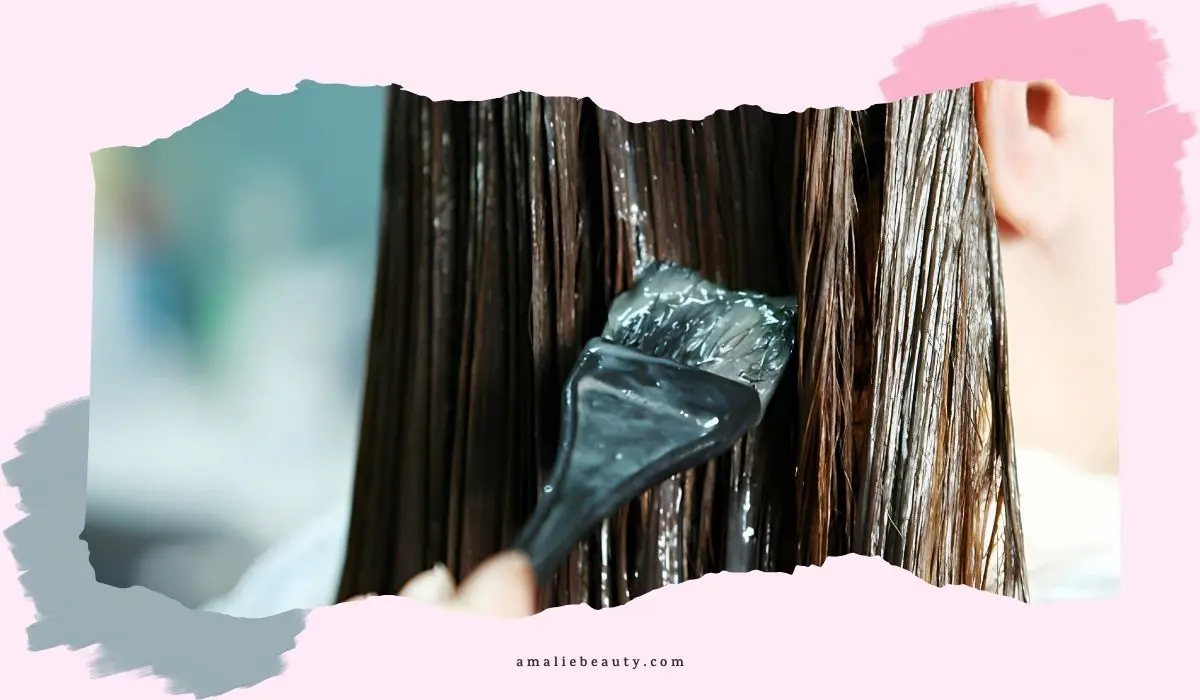When it comes to changing the color of hair, bleaching is a highly effective way to get a lighter shade. While bleaching dry hair is a well-established process, some people are unsure of the results and possible dangers of bleaching wet hair. The symptoms of bleaching, particular precautions to take while using bleach on damp hair, and the most reliable scientific evidence for bleaching will all be covered in detail in this detailed review:
Hydrogen peroxide is the main ingredient in hair bleaching solutions because it is a strong oxidizing agent that changes the pigment found naturally in hair shafts. Hair color is produced by the breakdown of melanin, which occurs during the bleaching process, and lighter hair as a result. The fundamental science doesn’t change, but the state of the hair, wet or dry, can have a big influence on the result.
Wet Hair Bleaching Is A Difficult Task
There is an extra layer of complexity to the process when we decide to bleach with hair. Compared to dry hair, wet hair is more permeable and vulnerable to outside factors by nature. Because of its increased porosity, the hair may absorb and react to the bleach differently which could result in different outcomes and higher damage risks.

The Risk Associated With Bleaching Wet Hair
- Inequalities in outcomes
Because wet hair is porous, the bleach may not distribute evenly, giving even or patchy color results.
- Increased damage
One important factor to consider is how vulnerable wet hair is. The risk of damage, such as breakage, split ends, and an overall compromised hair structure, can be increased by bleaching wet hair.
- Scalp Irritation
Using bleach on a damp scalp increases the possibility of burns or irritation. Wet hair’s high water content can quicken the chemical reaction and cause discomfort.
- Colour inconsistencies
Wet hair can cause the bleach to become less effective, which can affect the final color. This could result in an unwanted shade or require more bleaching sessions to get the desired color.
Optimal Methods For Bleaching Damp Hair
- Start with dry hair.
It is generally advised to begin the bleaching process with dry hair. Dry hair ensures even coverage of the bleach and allows for greater control over application.
- Preparing hair
It is crucial to examine and prep your hair before bleaching. Treatments for deep conditioning can fortify the hair, lowering the risk of damage from bleaching.
- Dividing
Before using bleach, sectioning, the hair is an important but precise step. This method produces a more even and consistent color by improving control over the application.
- Speak with an expert
If you are still unsure or have specific hair concerns, it is best to consult a professional colorist. They can assess the type of hair you have, its state right now, and your desired result before providing you with customized advice for a successful bleaching procedure.
After Bleaching Care
Reaching the right color is just the first step. Taking proper care of your hair after washing is essential to keeping it healthy. To stop additional damage, this entails minimizing heat styling, treating yourself to deep conditioning treatments, and utilizing shampoos without sulfates.
- Reduce the frequency of hairwashing
Your hair is weaker and more prone to breaking in the first three weeks following your bleach treatment (especially if it’s wet hair). Shampooing further depletes the cuticle of the natural oils required for healthy and glowing hair. Use a shower cap on days when you don’t wash your hair, and wash it every 3 to 4 days. Dry shampoo is a great way to extend the time between washes in your hair care regimen.
- Further condition more
Reducing the frequency of hair washing does not imply abandoning your hair care regimen because bleaching your hair leaves your strengths extremely dry, it is critical to replace your shampoo with a deep conditioner and a hydrating conditioner.
Experts say that getting your hair wet isn’t enough, it needs more moisture, comparing drinking a glass of water to jumping in a pool is an example, the first doesn’t do anything to relieve your thirst if you are parched.
By using a moisturizing conditioner, you can restore the hydration lost in your hair and give it a shiny, soft finish. To get the most moisture, make sure all of your products are designed for bleached hair. Investing in a lot of hair moisturizer is to help quench parched hair.
- After washing, gently Pat dry your hair
This is crucial if your hair is particularly prone to breaking. Treat your hair with kindness. Being overly rough can exacerbate the damage because wet hair is the most delicate. To avoid damaging the cuticle further by roughening it up, try detangling it while the conditioner is still in. Use a more delicate towel or T-shirt or microFiber cloth to squeeze out the water instead of rubbing.
- Avoid being too flamboyant
Every hairdresser’s go-to tool for blonde hair, shampoo with a purple tint, should be switched out every other week for your regular shampoo. Brassiness, which is defined as the undesirable warm tones that appear in bleached hair, will be eliminated by doing this.
- Mix in some hair oil
Nutritious hair oil soothes and shields damaged cuticles from bleaching, acting as a pre-and post-shower treatment equally. Always use hair oil to seal in moisture, both before and after shampooing. Applying oil to your hair beforehand can help prevent the shampoo from stripping your strands by acting as a buffer and applying oil right after the shower facilitates the retention of hydration. Moisture cannot escape the layer that oil forms. Bleached hair requires maximum assistance. Use that oil every day to replace the lost nutrition during the most important three weeks following the bleaching process.
Conclusion
It could seem alluring to bleach damp hair because it’s believed to be more effective, but there are some disadvantages to take into account. The more tried and true method of bleaching dry hair and achieving an ideal color change with little damage still requires careful, pre-treatment and after-care.
Making your hair’s health a priority and getting expert advice when necessary will guarantee a safe and effective bleaching procedure. Remember that every hair type is different and that the best results from your hair coloring journey will come from a cautious approach.

